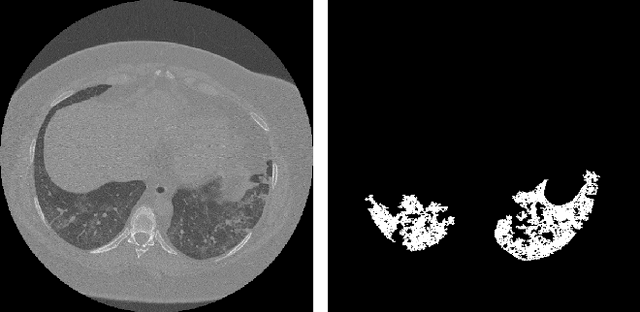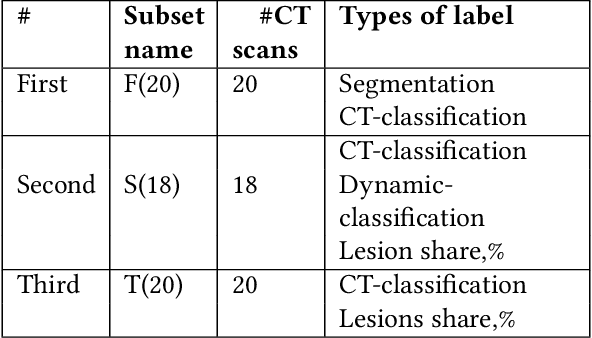Alex Tuzhilin
CoRSAI: A System for Robust Interpretation of CT Scans of COVID-19 Patients Using Deep Learning
May 25, 2021



Abstract:Analysis of chest CT scans can be used in detecting parts of lungs that are affected by infectious diseases such as COVID-19.Determining the volume of lungs affected by lesions is essential for formulating treatment recommendations and prioritizingpatients by severity of the disease. In this paper we adopted an approach based on using an ensemble of deep convolutionalneural networks for segmentation of slices of lung CT scans. Using our models we are able to segment the lesions, evaluatepatients dynamics, estimate relative volume of lungs affected by lesions and evaluate the lung damage stage. Our modelswere trained on data from different medical centers. We compared predictions of our models with those of six experiencedradiologists and our segmentation model outperformed most of them. On the task of classification of disease severity, ourmodel outperformed all the radiologists.
Radiologist-level stroke classification on non-contrast CT scans with Deep U-Net
Mar 31, 2020


Abstract:Segmentation of ischemic stroke and intracranial hemorrhage on computed tomography is essential for investigation and treatment of stroke. In this paper, we modified the U-Net CNN architecture for the stroke identification problem using non-contrast CT. We applied the proposed DL model to historical patient data and also conducted clinical experiments involving ten experienced radiologists. Our model achieved strong results on historical data, and significantly outperformed seven radiologist out of ten, while being on par with the remaining three.
 Add to Chrome
Add to Chrome Add to Firefox
Add to Firefox Add to Edge
Add to Edge